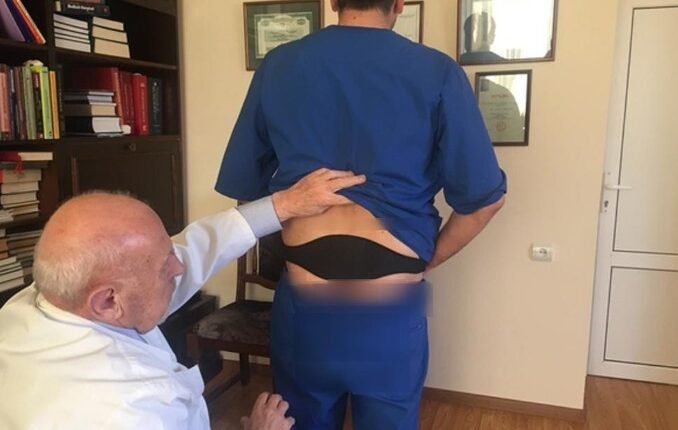Understanding Chronic Prostatitis
Chronic prostatitis, often referred to as chronic pelvic pain syndrome (CPPS), is a condition that affects millions of men worldwide. It is characterized by persistent pelvic pain, urinary discomfort, and sometimes sexual dysfunction, making it a challenging condition to manage. Traditional treatments, such as antibiotics, anti-inflammatory drugs, and lifestyle modifications, often provide limited relief because they address symptoms rather than the underlying cause. Consequently, patients and healthcare professionals have sought alternative therapies that can promote long-term healing rather than temporary symptom relief. One such innovative treatment gaining attention is Thermobalancing Therapy.
What is Thermobalancing Therapy?
Thermobalancing Therapy is a non-invasive, natural treatment that leverages the body’s own heat to restore equilibrium in the prostate area. Unlike standard heat treatments, which may use high temperatures externally, this therapy maintains a mild, continuous warmth directly in contact with the prostate. This controlled thermal environment enhances blood circulation, promotes cellular regeneration, and helps reduce inflammation over time. The therapy is delivered through a specialized medical device designed to be worn comfortably, allowing prolonged application without discomfort.
The principle behind this therapy is straightforward: inflamed prostate tissues often suffer from poor blood flow and congestion, leading to oxygen deficiency and accumulation of waste products. By creating an optimal thermal environment, Thermobalancing Therapy encourages natural healing processes at the cellular level, gradually alleviating the discomfort associated with chronic prostatitis.
How Thermobalancing Therapy Works
Chronic prostatitis is often accompanied by tissue inflammation and pelvic congestion. Thermobalancing Therapy works by reflecting the natural body heat back into the prostate area, maintaining a consistent temperature that is gentle but therapeutically effective. This mild warmth stimulates microcirculation, ensuring that oxygen and nutrients reach the affected tissues efficiently. Improved blood flow not only helps reduce swelling but also accelerates the removal of metabolic waste, which can aggravate inflammation.
Additionally, the therapy relaxes nearby muscles, alleviating the tension that frequently contributes to pelvic pain. Unlike intermittent heat treatments, Thermobalancing Therapy provides continuous, long-term support, which is essential for chronic conditions that do not respond quickly to conventional methods. Over weeks of consistent use, patients often notice reduced pain, improved urinary function, and enhanced overall well-being.
Clinical Benefits and Patient Experiences
Several studies and patient reports highlight the benefits of Thermobalancing Therapy in managing chronic prostatitis:
- Symptom Relief – Regular application of the therapy has been shown to reduce pelvic pain, discomfort during urination, and nighttime urinary frequency, which are hallmark symptoms of chronic prostatitis.
- Non-Invasive Approach – As a drug-free and non-surgical therapy, it avoids potential side effects of medications or complications associated with invasive procedures.
- Long-Term Healing – Unlike short-term pain relief methods, Thermobalancing Therapy targets the root cause of inflammation, promoting long-term improvement in prostate health.
- Ease of Use – The therapy can be administered at home using a small, wearable device, making it convenient for patients to maintain consistent treatment without disrupting daily routines.
Many patients report that they experience gradual but steady improvement over a period of several weeks. Pain and urinary discomfort decrease, and some notice a significant reduction in the recurrence of symptoms that were previously persistent despite conventional treatments.
Why Thermobalancing Therapy Stands Out
Chronic prostatitis often requires a multifaceted approach for effective management. While medications can temporarily alleviate symptoms, they rarely address the underlying issues of poor circulation and tissue congestion. Thermobalancing Therapy stands out because it works with the body’s natural mechanisms to stimulate healing. Its mild, continuous warmth improves blood flow, reduces inflammation, and promotes cellular recovery in a way that medications alone cannot achieve.
Moreover, the therapy’s non-invasive nature makes it accessible to a wide range of patients, including those who cannot tolerate long-term medication use or are hesitant to undergo surgical interventions. This patient-centered approach has made Thermobalancing Therapy an increasingly preferred option among urologists and healthcare providers specializing in male pelvic health.
Integrating Thermobalancing Therapy into Daily Life
For best results, consistency is key. Patients are encouraged to use the device for several hours a day, depending on medical advice, and to combine the therapy with lifestyle adjustments such as regular exercise, stress management, and a balanced diet. Maintaining proper hydration and avoiding prolonged sitting can further support the therapy’s effectiveness. While each patient’s experience may vary, a typical course of therapy can span several weeks to months, with gradual improvement noted over time.
Conclusion
Chronic prostatitis remains a complex condition that significantly impacts quality of life. While conventional treatments provide symptomatic relief, they often fall short of addressing the root cause. Thermobalancing Therapy offers a safe, non-invasive, and natural alternative that targets the underlying issues of inflammation and poor circulation in the prostate. By harnessing the body’s own heat, this therapy promotes cellular regeneration, reduces pain, and supports long-term prostate health.
For patients seeking a sustainable solution beyond medications and intermittent treatments, Thermobalancing Therapy represents a promising advancement in chronic prostatitis management. Its patient-friendly approach, combined with documented effectiveness, positions it as an important option for those committed to restoring comfort and well-being in their daily lives.



